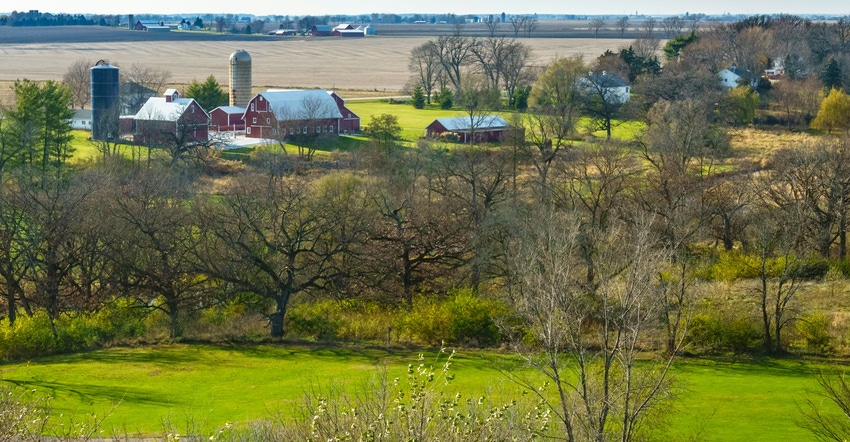July 1, 2020

University of Minnesota Extensions educators are encouraging farmers to check their windbreaks and woodlands for invasive species.
In a recent blog post, Extension educators Claire LaCanne, Matt Russell and Gary Wyatt note that invasive species plants or insects could be growing in those areas. As you walk along, you also may find high value trees ready for harvest for timber products.
While out scouting, keep an eye out for:
Buckthorn. Buckthorn trees are not native to North America and were brought over from Europe in the 1850s by settlers to use as windbreaks. Little did they know that birds eat the seeds of the female trees and spread these prolific seeds, changing the native windbreak and woodland understory.
Buckthorn is also the overwintering host for soybean aphid. Buckthorn is on the Minnesota noxious weed list and on the state Department of Natural Resource’s invasive species list.
More can be learned about buckthorn control and management and its relationship with soybean aphids by going online.
Spruce diseases. If you have Colorado blue spruce or Black Hills spruce in your windbreaks, have you noticed any browning of needles on the lower branches as the trees reach 15 to 20 years old? If you have, you may have needle cast disease.
There are two needle cast diseases, Rhizophaera and Stigmina. To help increase the longevity of your trees, you may want to learn more about these needle cast diseases and their management. Visit z.umn.edu/umneedlecast for more information.
Marketable trees. You may have timber trees of marketable value in your windbreak or woodland. Black walnut, oaks and black cherry have been valuable trees in the past.
Don’t overlook possible profits from your windbreak or woodlands. You may be interested in a Woodland Stewardship Plan or possibly contacting a Department of Natural Resources forester to conduct a timber cruse to evaluate valuable trees. Learn more at z.umn.edu/findaforester.
Emerald ash borer. Emerald ash borer is killing ash trees in Minnesota. Many windbreaks and communities have green ash trees. One indicator of emerald ash borer in ash trees is a woodpecker pecking on a living ash tree.
Grazing. If you have livestock and are currently or are considering grazing your windbreak or woodland, you need to manage three resources: livestock, forage and trees. This practice is called silvopasture.
Be careful to not over-graze pastures and woodlands.
Tree selection. U-M Extension has several online resources available for those looking to renovate or plant a new windbreak or looking for recommended trees to plant in Minnesota. U-M’s UFore Nursery and Lab also offers information on urban forestry outreach. The state Department of Transportation also offers a Plant Selector Program resource, and the Department of Natural Resources offers information on tree planting and care for landowners.
Soil and Water Conservation District offices in each county may offer programs for windbreak and conservation plantings, plus they may sell conservation trees and shrubs.
Ask your county SWCD staff for more information.
Knowing what trees are in your windbreak and how to manage them can help make your windbreak more effective, harbor fewer invasive species and result in additional revenue streams.
Source: University of Minnesota Extension, which is solely responsible for the information provided and is wholly owned by the source. Informa Business Media and all of its subsidiaries are not responsible for any of the content contained in this information asset.
You May Also Like




